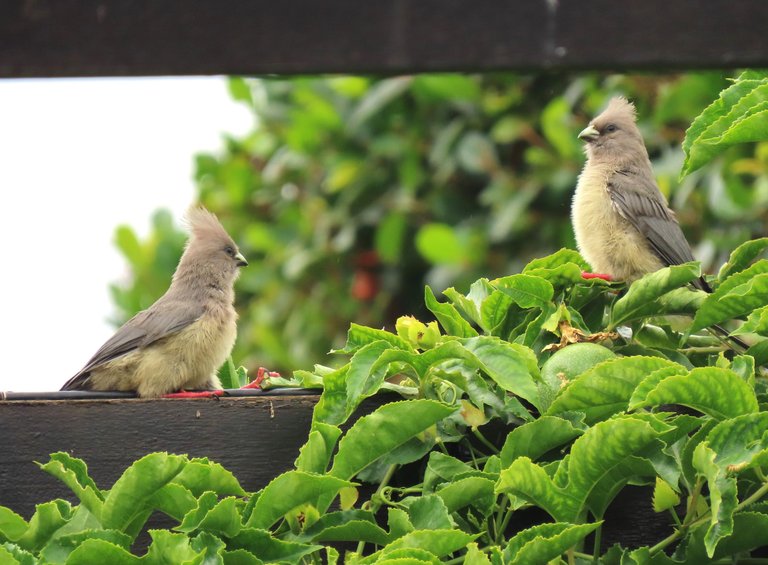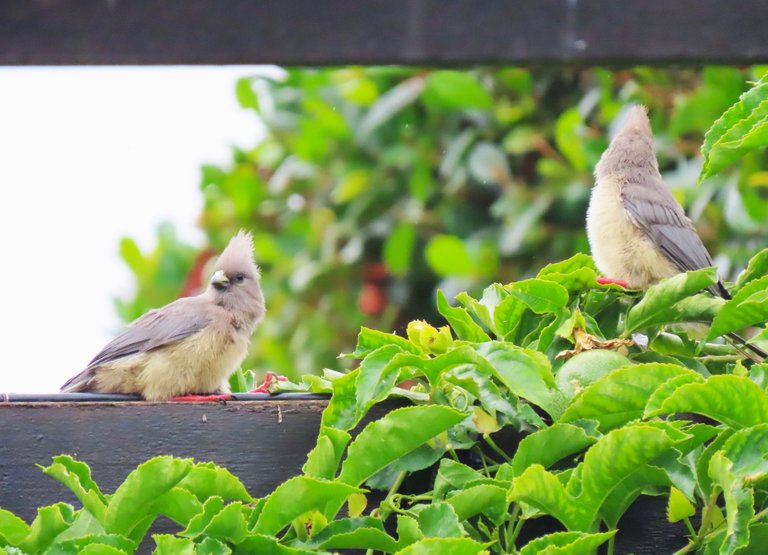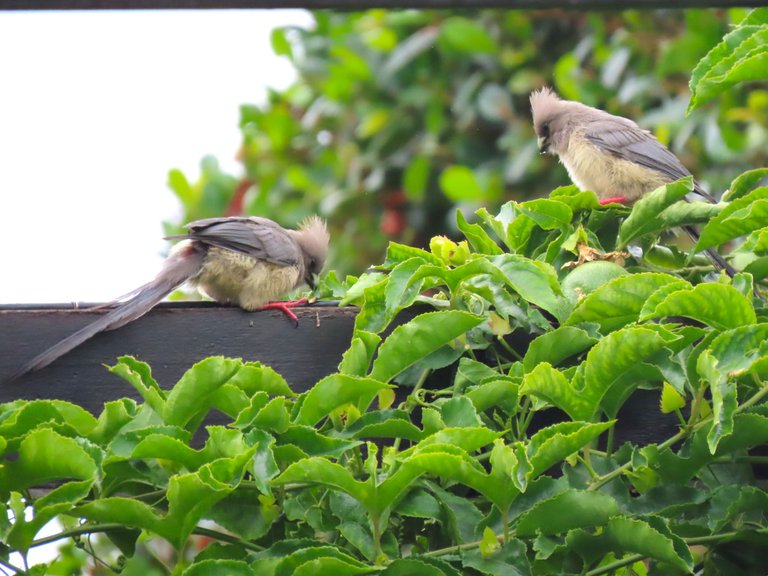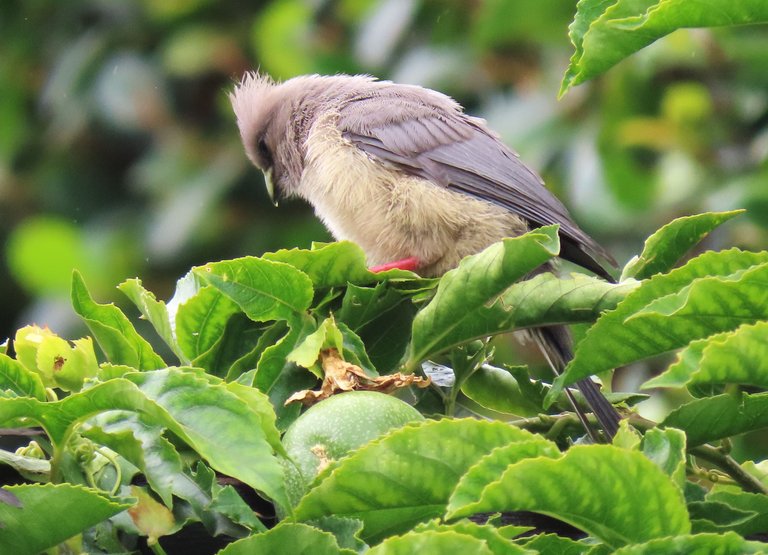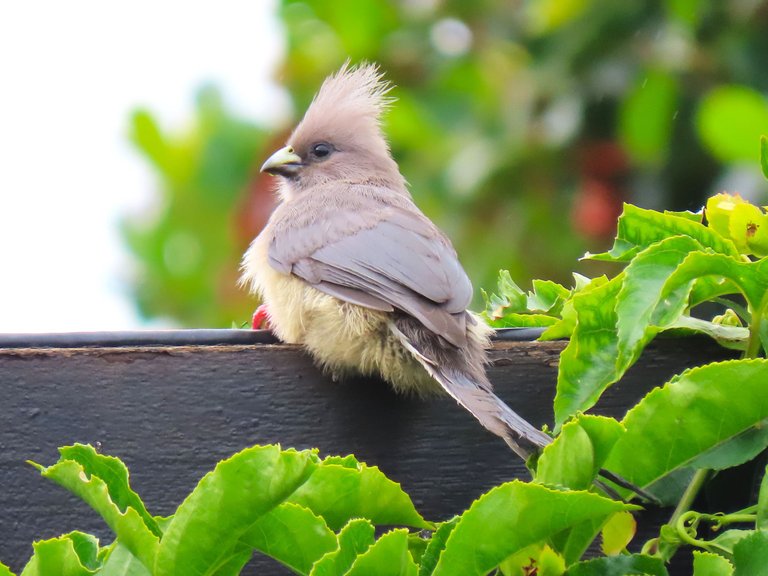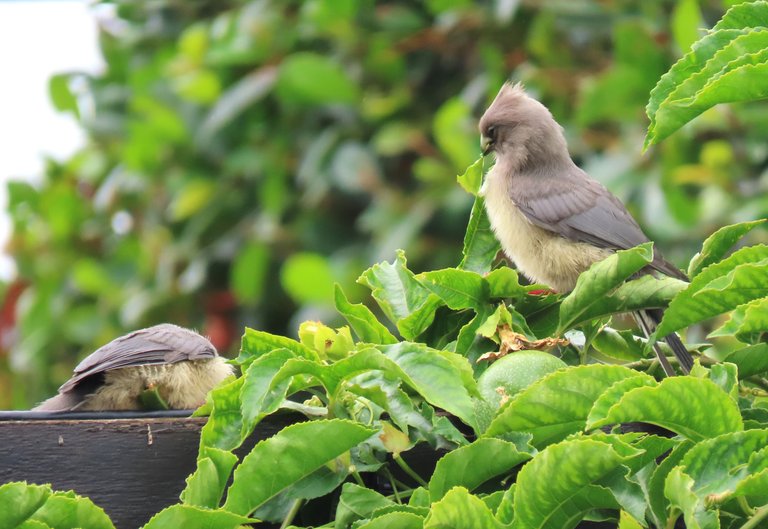Our special wishes with all Hiveans are that this will be your year of great successes and sparkling health.
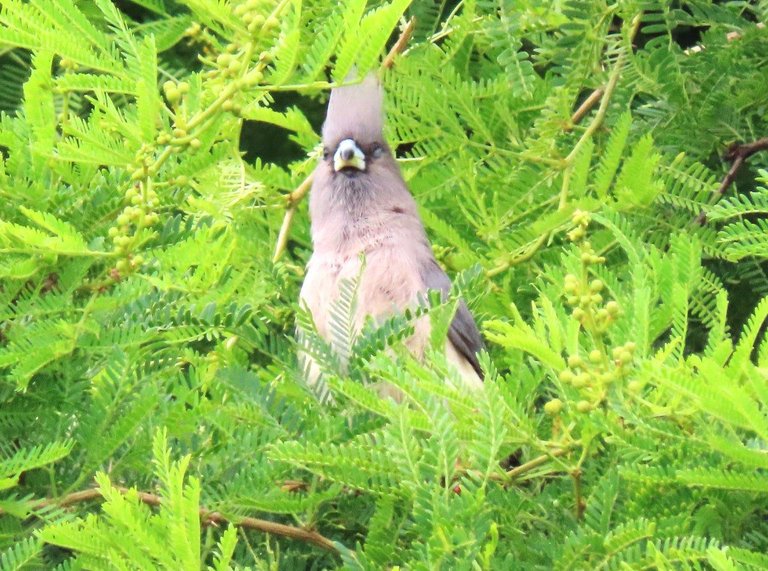
A mousebird invasion. Some say that these birds are difficult to get on camera. I agree, but I have to say that patience always pays. The one in the photo above had his left eye closed to the wind, but his right eye was watching out for predators.
The white-backed mousebird (Colius colius) is a large species of mousebird. It is distributed in western and central regions of southern Africa from Namibia and southern Botswana eastwards to Central Transvaal and the eastern Cape.
This mousebird prefers scrubby dry habitats, such as thornveld, fynbos scrub and semi-desert.
In handling mousebirds the tail should be avoided, as the long rectrices come out so easily as to suggest that it is a sacrificial defence mechanism.
Two issues that I have highlighted in the passage above is that
1.The White-backed Mousebirds also appear here in the Western Cape.
2.I never knew that a mousebird's tail will fall off in a defensive maneuver, as it is the same as our lizards when they are caught.
Oops! Look how brave these two were, as they came to sit on our granadilla fence.
I think the bottom one is the female, and she gave me a look but decided to ignore me as I was a distance away. Somebody needs to teach the mousebirds to watch out for camera zooms. Lol.
So, she ignored me, and they carried on doing what they do.
Did I tell you, that these birds are shy and very difficult to get on camera?
Its feeding habits make it very unpopular with fruit farmers and domestic gardeners, which might be why it is very shy as a rule. When it spots a human it either sits quietly in a tree or takes off immediately. The white-backed mousebird has a whistled zwee-wewit call. It also has a buzzing or crackling call that might be for alarm or keeping in contact with the group.
Source
The guy at the top inspected the leafy salad.
The lady gave another peep my way, but all was still well.
So, what do they eat? Check how the guy at the top stretches that leaf before chewing it off.
The good thing here is that our granadillas will soon start to ripen, and although the birds don't eat the granadillas, we do and the squirrels to also. The Strawberry Guava tree fruit will also start to ripen, and so my wife will make us one of those fruit punches with extra vitamins. She will mix the organic granadillas with the fruit of the strawberry guava tree. Potent stuff indeed, and very, very tasty.
I hope you have enjoyed the pictures and the story.
Photos by Zac Smith-All Rights Reserved.
Camera: Canon PowershotSX70HS Bridge camera.
Thank you kindly for supporting this post.
